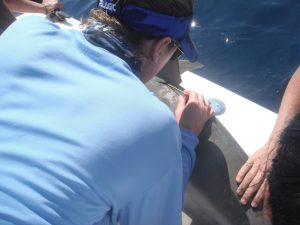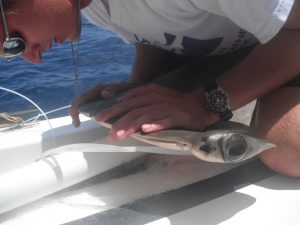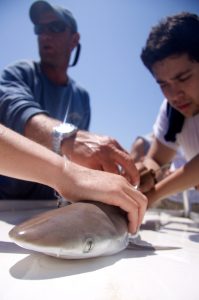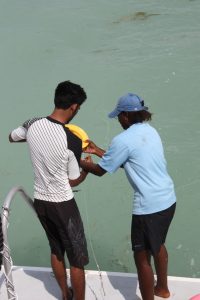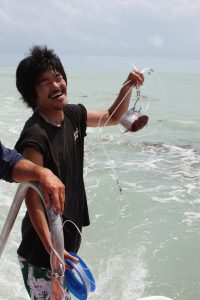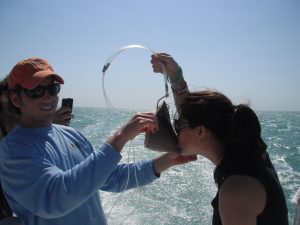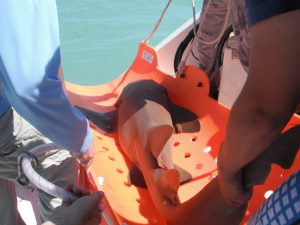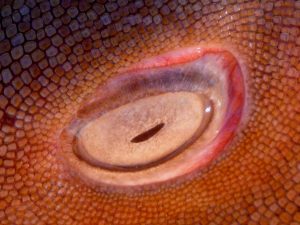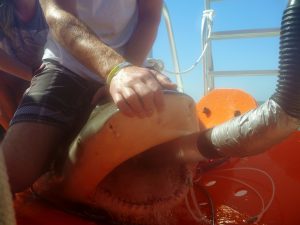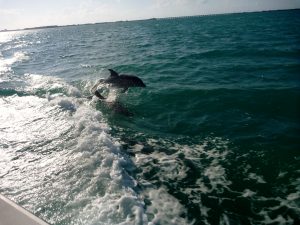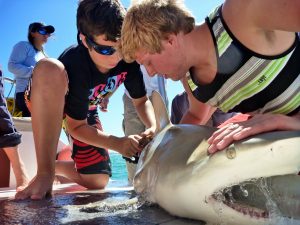Double The Lines With Half The Luck
Saturday, April 30th 2011
It was a gorgeous, sunny day out on the water with South Broward High School. We were using a smaller boat than usual so although there was a limited amount of room, things went smoothly throughout the day. We headed out to our reef site which is deeper than most of our other sites. This means that the ropes attached to our drumlines are doubled so that they are twice as long. Luckily, some of our high schoolers were more than willing to help us pull in these lines. Our first shark of the day was a good-sized Sandbar shark. We brought the shark up on the side of the boat, placed the water pump in its mouth so it could continue to breathe, and set to work taking muscle and blood samples, and placing tags. We put two tags on the shark: an orange roto tag on the dorsal fin and a yellow spaghetti tag at the base of the dorsal fin. The shark was released in great condition and the drumline was re-baited and placed back on its site.
The rest of the day was fairly slow. One of the teachers from South Broward spotted a Hammerhead’s dorsal fin near one of our other buoys. Quickly, we set out a bait in order to try to catch the shark but after a few minutes without a bite, we continued to pick up drumlines. Near the end of the day, we pulled in a Scalloped Hammerhead. This beautiful animal had another Scalloped Hammerhead following it as we brought the one on the line up to the boat. The second shark swam away as we pulled the hooked one onto the boat. The same steps were taken as with the Sandbar shark: the water pump was put in place and muscle and blood samples were taken. The shark was also outfitted with a satellite tag so we can track its movements and collect important data regarding its mating and feeding grounds.
Although the day only yielded two sharks, it was still a great day out on the water. Catching only two sharks at a comparatively productive reef site is yet another sign that shark populations are in decline worldwide. It reinforces how important it is to continue to educate people on the plight of sharks and what they can do to help.
Much sharky love,
Kyra Hartog

